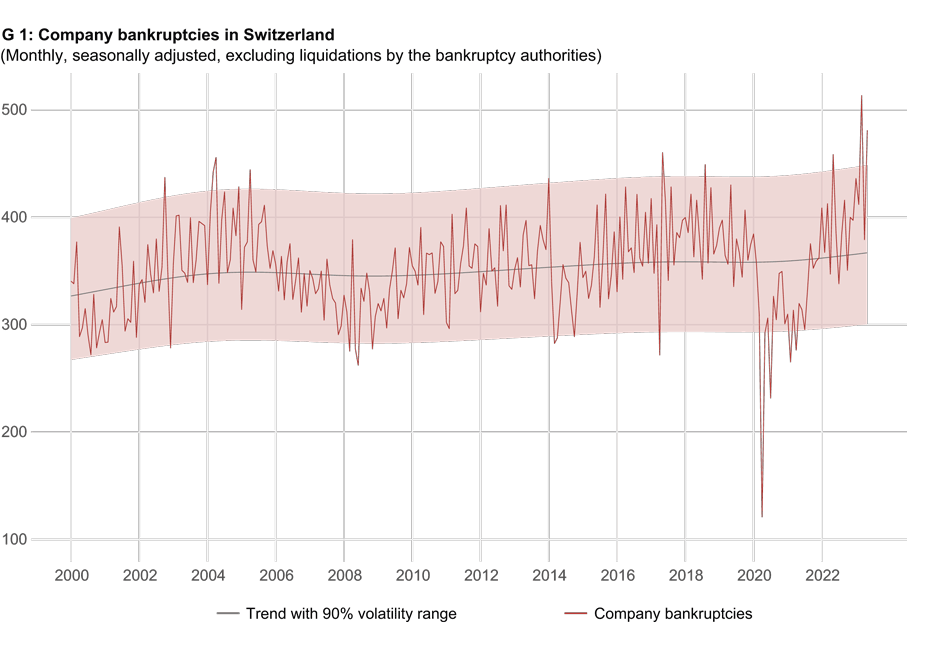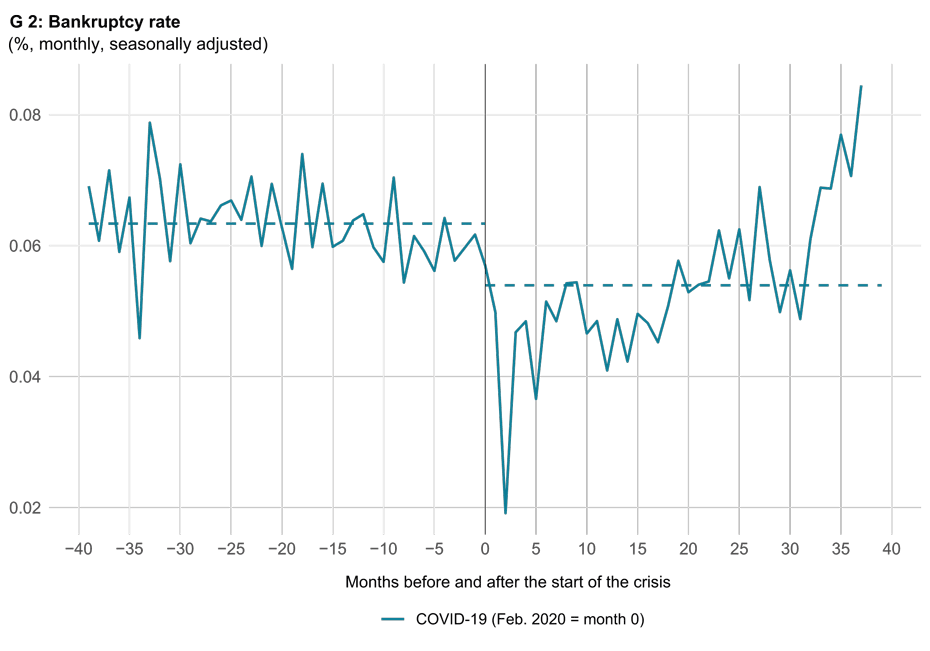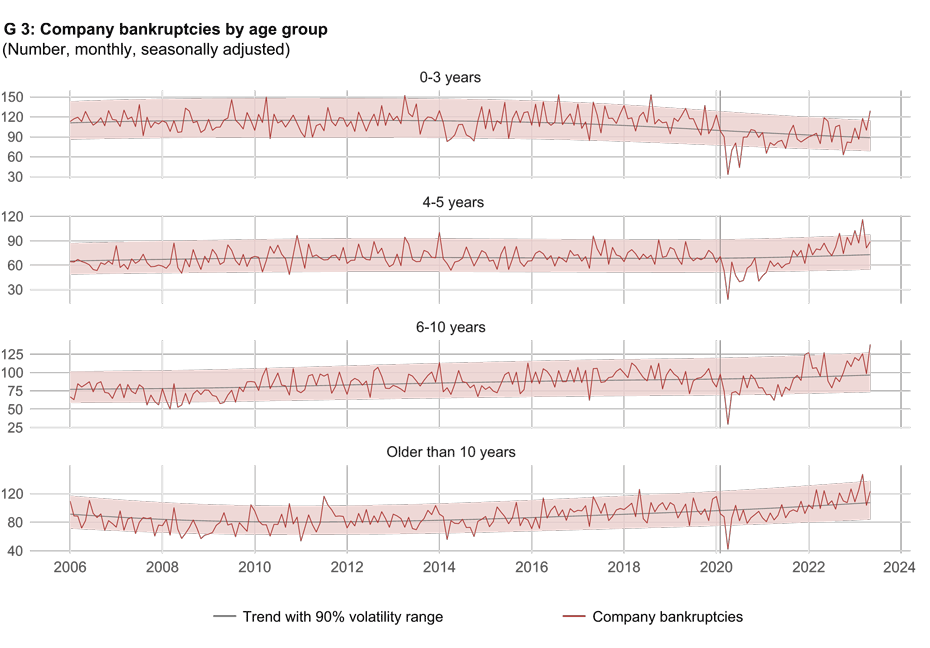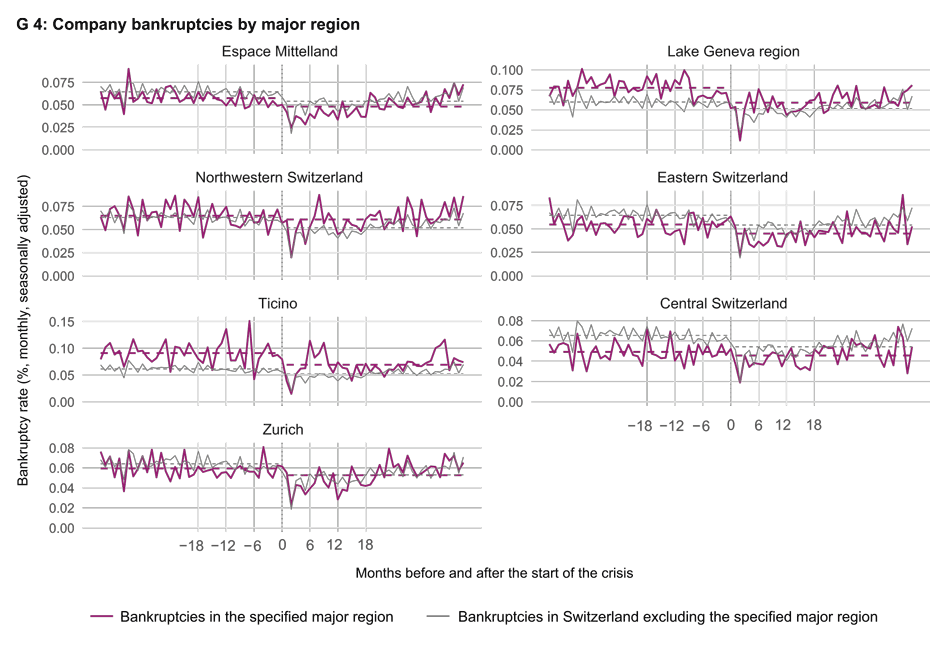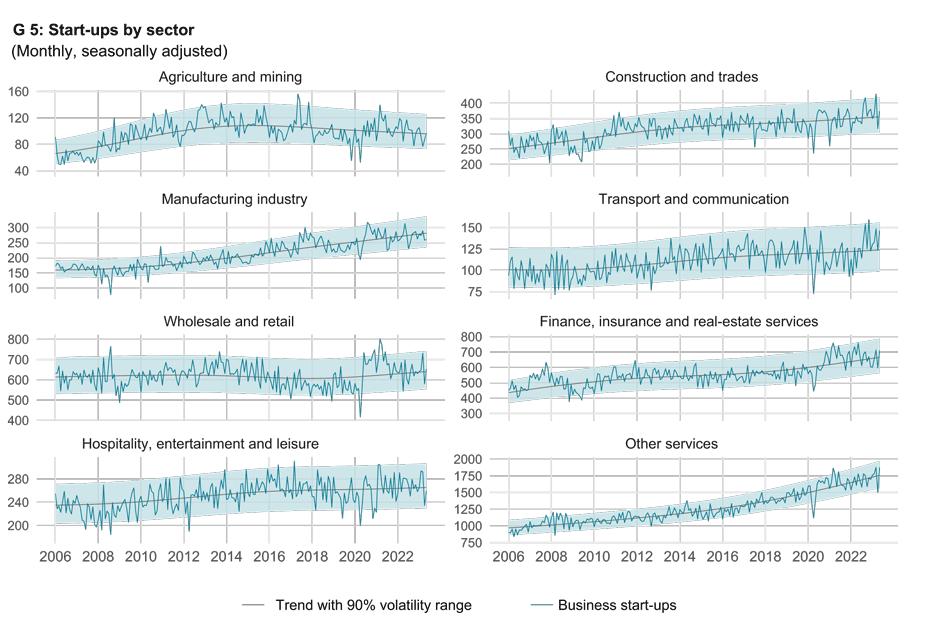
Significant increase in company bankruptcies
A significant increase in company bankruptcies has been evident in Switzerland since autumn 2022, while business start-ups have been declining sharply for several months. The following article examines this trend in detail and gives possible reasons for this increase.
KOF examines the numbers of company bankruptcies based on commercial register figures collected and processed by Dun & Bradstreet Schweiz AG. The data show that the monthly bankruptcy figures have risen since October 2022 and are still on an upward trajectory. Company bankruptcies (excluding liquidations by the bankruptcy authorities) in 2022 were, on average, around 25 per cent higher than in 2020 and roughly 16 per cent higher than in 2021 (see chart G 1). The wave of bankruptcies that KOF predicted for 2022 has now actually occurred. In March 2023 the number of bankruptcies reached its highest level in 20 years, with more than 500 firms in Switzerland filing for bankruptcy.
However, bankruptcy rates averaged over all 40 months since the start of the COVID-19 pandemic in February 2020 are still significantly lower than the 40-month average before the pandemic (see chart G 2).
Interest-rate hike putting firms under pressure
Three factors are contributing to the rise in bankruptcies. Firstly, higher energy costs and other cost increases resulting from past inflation are pushing up companies’ operating costs. Unless a firm can pass on these higher costs to its customers, its margins will decline and may make its business unprofitable.
If there are no reserves, this will lead to bankruptcy. Secondly, the Swiss economy – like other countries – is still in a ‘post-pandemic phase’. Bankruptcies during the COVID-19 pandemic were significantly mitigated by government lending programmes and support measures. Because these impacts are now coming to an end, the current increase can partly be interpreted as a catch-up effect. Thirdly, as the Swiss National Bank and other central banks around the world tighten monetary policy, companies’ funding costs are rising and banks are becoming more cautious about lending in the current environment. Consequently, it is more likely that firms – especially if they are already indebted – will no longer be able to obtain new loans and will have to file for bankruptcy.
A breakdown of firms by age group shows that firms in every age category have been hit by the wave of bankruptcies over the past six months (see chart G 3). Large numbers of bankruptcies (relative to the long-term trend) have been observed in recent months, especially in the age groups 4-5 years and 6-10 years. It is therefore not only young firms set up shortly before or during the COVID-19 pandemic that are being affected.
Chart G 4 shows the bankruptcy rates in the various major regions of Switzerland. The dotted lines indicate the average bankruptcy rates before and after the start of the COVID-19 pandemic. The past few months have often seen a sharp rise in bankruptcies across all regions, especially in Eastern Switzerland and Central Switzerland.
Analysis of the general trend since the start of the pandemic reveals clear differences in regional impacts: for example, the average bankruptcy rate in Northwestern Switzerland during the period from February 2020 to May 2023 is significantly higher than the average bankruptcy rate for Switzerland excluding this region, while pre-pandemic it was close to the average for the whole of Switzerland. In the Lake Geneva region, on the other hand, the average bankruptcy rate during the period from February 2020 to May 2023 is only marginally above the national average, although it was significantly higher before the pandemic.
Start-ups decreasing
The numbers of start-ups in Switzerland were relatively high from autumn 2022 to March 2023 (having previously been rather low following record levels in the first half of 2021). In the past two months, however, there has been a decline across almost all sectors (see chart G 5). The reasons for this weaker start-up momentum are likely to be the deteriorating funding conditions and gloomier business prospects in various sectors. Only in the transport and communications sectors does there appear to have been a start-up surge in recent months for the first time since the beginning of the pandemic. This could be related to the fact that demand for cultural services and tourism remains high post-pandemic.
Bankruptcies are likely to remain above average in the second half of the year
All three factors mentioned above – i.e. high costs, catch-up effects in the wake of the pandemic and more challenging funding conditions – suggest that bankruptcy rates are set to remain above average in the second half of 2023. The slower pace of economic activity expected this year is also likely to have a negative impact.
Contacts
KOF Konjunkturforschungsstelle
Leonhardstrasse 21
8092
Zürich
Switzerland
Professur f. Wirtschaftsforschung
Leonhardstrasse 21
8092
Zürich
Schweiz

